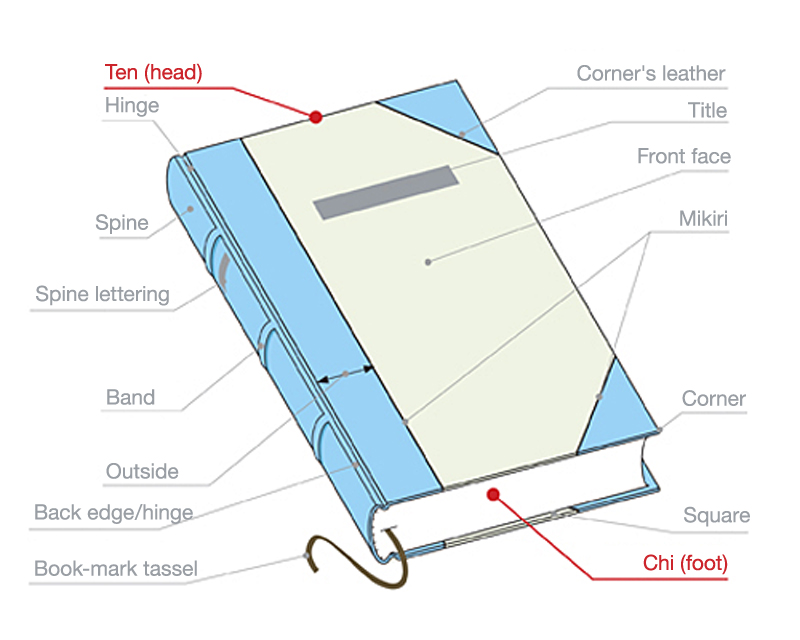Ten (Head) and Chi (Foot)
天・地
Ten・Chi
CATEGORIES
Ten (head) refers to the top edge of pages in bound books and magazines. Chi (foot) refers to the bottom edge of those pages. Each of these is part of what is known as the koguchi (fore edge) in its broad sense. There are also occasions in which these terms refer to the margins above and below the printed portion (the text block) of the page, with ten (head) referring to the upper margin and chi (foot) referring to the lower. The lower margin is sometimes also referred to as the keshita. When used together as tenchi, they refer to the length between the upper and lower edges of the object in question, whether it be a booklet, a sheet, a text block, an illustration, etc.
Generally, when referring to booklets such as books and magazines, multiple pages (usually 16 or 32) are printed on both sides of a single large sheet, which is then folded down to the size of a single page and then bound. Once bound, all but the bound side are cut to produce a uniform appearance. Depending on the folding method, half of the side opposite of the bound side remain unopened, with all of one of the other two sides unopened and the final side fully open. For example, with the standard folding method, when the text is printed vertically the bottom side remains unopened (with the top side is open), and when the text is printed horizontally the opposite is the case. In principle, therefore, cutting is required in a minimum of two places, with the opened edge remaining uncut. This method, which simplifies the process and reduces the cost, used to be used with paperback books, but because the uncut edge is easily soiled during shipping and while stored, today it is rarely used.


